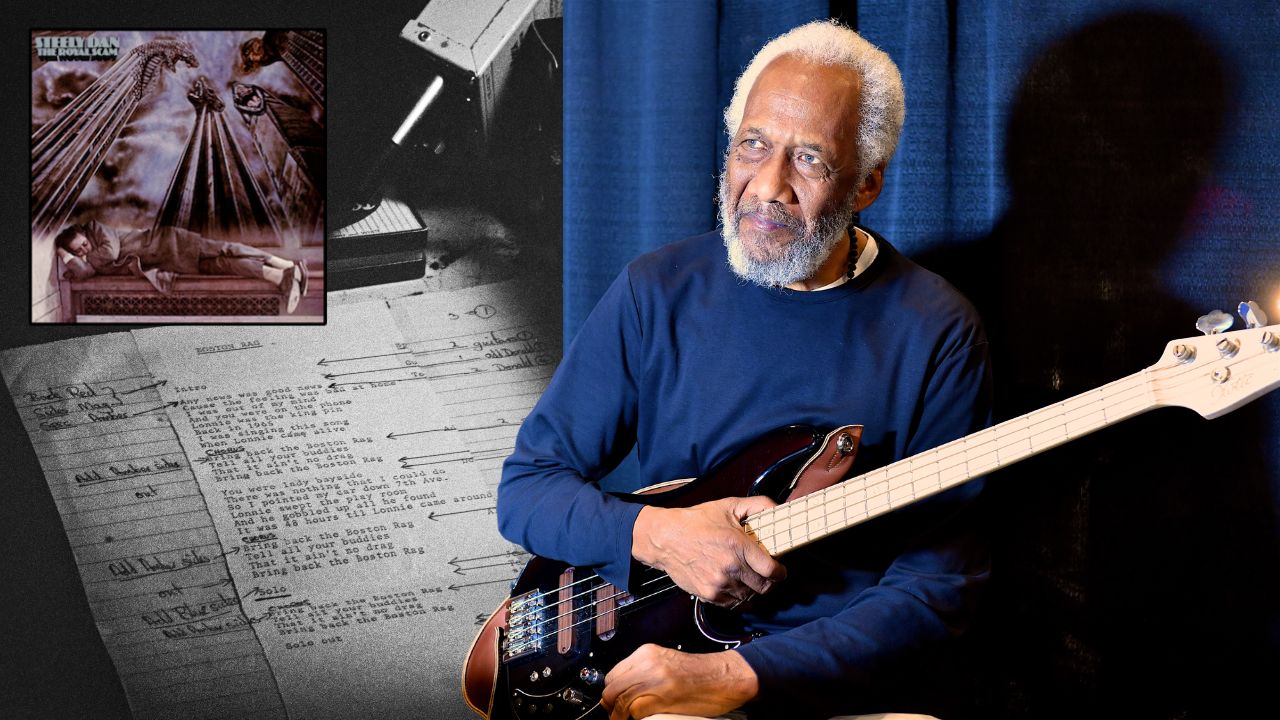“I credit half of that bassline to James Jamerson. I’ve always been proud of knowing him”: Listen to Chuck Rainey’s isolated bass on Kid Charlemagne
Chuck Rainey tips his hat to Motown legend James Jamerson in this 1976 Steely Dan classic

Considering the length and diversity of Chuck Rainey’s resume as one of the bass world’s most prolific studio musicians, a bassline would have to be pretty special to rank among the best of his career. Such is the case with Kid Charlemagne, from Steely Dan’s 1976 album The Royal Scam. “Kid Charlemagne is one of my most prized accomplishments as a recording bassist making up bass guitar patterns,” Rainey told BP, while also citing Allen Toussaint’s Just A Kiss Away from 1978’s Motion, as another personal highpoint.
The overwhelming influence on Rainey's bassline is that of Motown legend James Jamerson, with its plentiful root-5-octave shapes, drop-down moves to the 3rd, chromatic approach notes, and funky use of ‘wrong’ open notes as harmonic stepping stones. “I credit at least half of that bassline to Jamerson,” said Rainey, who recorded direct with his prized 1957 Fender Precision – long since retired from duty. “I’ve always been extremely proud of knowing him. We met around 1958, when we were both just starting to play the electric bass.”
Kid Charlemagne is full of syncopations, slides, double-stops and ghost-notes. “On that session I remember playing everything that I knew – everything I had ever come across! I felt very good about it, especially because we did it so quickly. I think the best sessions are the ones that happen quick, and I remember that The Royal Scam, as well as the earlier Steely Dan records Katy Lied and Pretzel Logic, were made very quickly. We probably did Kid Charlemagne in one or two takes.”
You can revisit Rainey’s isolated bassline below.
With its super-tight groove and careful balance of low and high registers, Rainey’s percolating bassline is a testament to his ability to translate a chord chart into a brilliant bassline. “I had worked with the producer Gary Katz previously in New York; I always like to work with someone who has faith and confidence in the rhythm section and who doesn’t feel the need to hire an arranger to write out parts. That, of course, was the case with Jamerson at Motown – after all, if someone had written out those parts of his, they never would have been played! It’s always a pleasure to work with someone who gives me a chord chart and just lets me be Chuck Rainey.”
Rainey was quick to point out that harmonically, much of his line on Kid Charlemagne is simpler than it might seem. "I don’t mind saying that with the exception of passing tones, everything I played was mostly 1-5-1. I’m pretty much set in the key with the position of my hands; there aren’t a lot of accidentals. It’s all within the chord.”
You can watch YouTuber Rick Beato's assessment of the track below.
All the latest guitar news, interviews, lessons, reviews, deals and more, direct to your inbox!
Having spent the 1960s as a first-call bassist in New York City, Rainey played with everyone from Louis Armstrong to Aretha Franklin. Along with Jamerson at Motown, he virtually defined the role of the electric bass in popular music.
“Jamerson, having started as an upright player, tended to throw in a lot of open strings – not to land on them, but to use them to get from one place to another,” said Rainey. “The ear is sympathetic to that, so if you play a quick open E, even if it’s not in the key, the ear might hear Eb. If a note goes by fast, the ear will always make it sound correct – especially if you place it at the right time.”
The most striking examples of Rainey’s open-string passing tones can be heard beneath the Bb13 chords in the verse. Other ear-catching moments include the trademark Rainey double-stop slides midway through the verses, the slap ‘solo’ after the first verse, and the thundering low E as Rainey hits bottom halfway through the instrumental bridge.
Speaking to Bass Guitar Magazine in 2008, the late Walter Becker, who co-founded Steely Dan with Donald Fagen in 1971, recalled his time working with Rainey. “I worked for many years with Chuck Rainey who played on most of the Steely Dan records. His style is rooted in a very unusual technique and so he has a very complicated way of playing bass, which is very different from most other players. I think I learned some things in general from him regarding my own bass playing, but there were other players whose styles I also imitated. One in particular was James Jamerson who was my hero.”

The Royal Scam is available to buy and stream.

Nick Wells was the Editor of Bass Guitar magazine from 2009 to 2011, before making strides into the world of Artist Relations with Sheldon Dingwall and Dingwall Guitars. He's also the producer of bass-centric documentaries, Walking the Changes and Beneath the Bassline, as well as Production Manager and Artist Liaison for ScottsBassLessons. In his free time, you'll find him jumping around his bedroom to Kool & The Gang while hammering the life out of his P-Bass.


